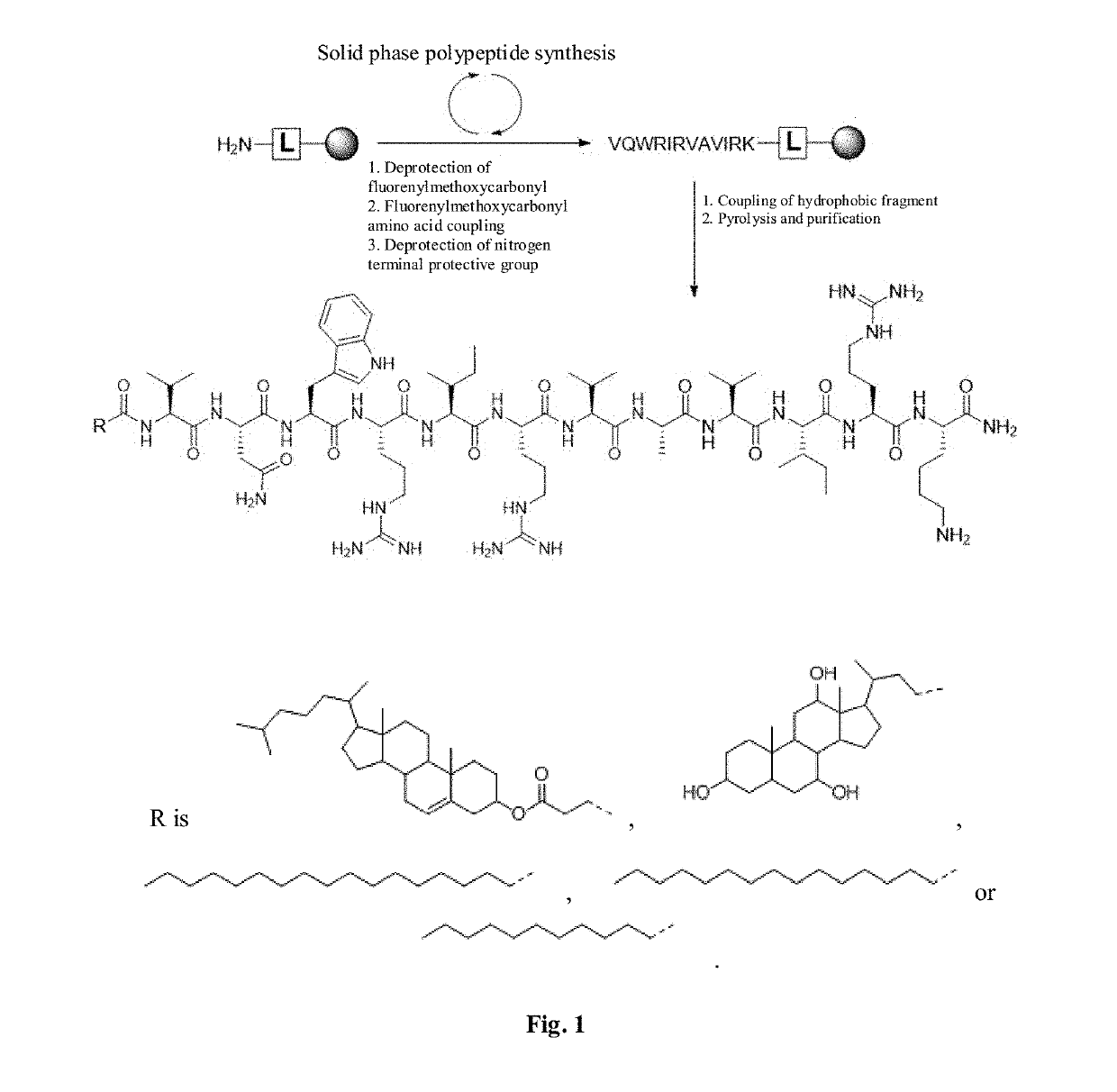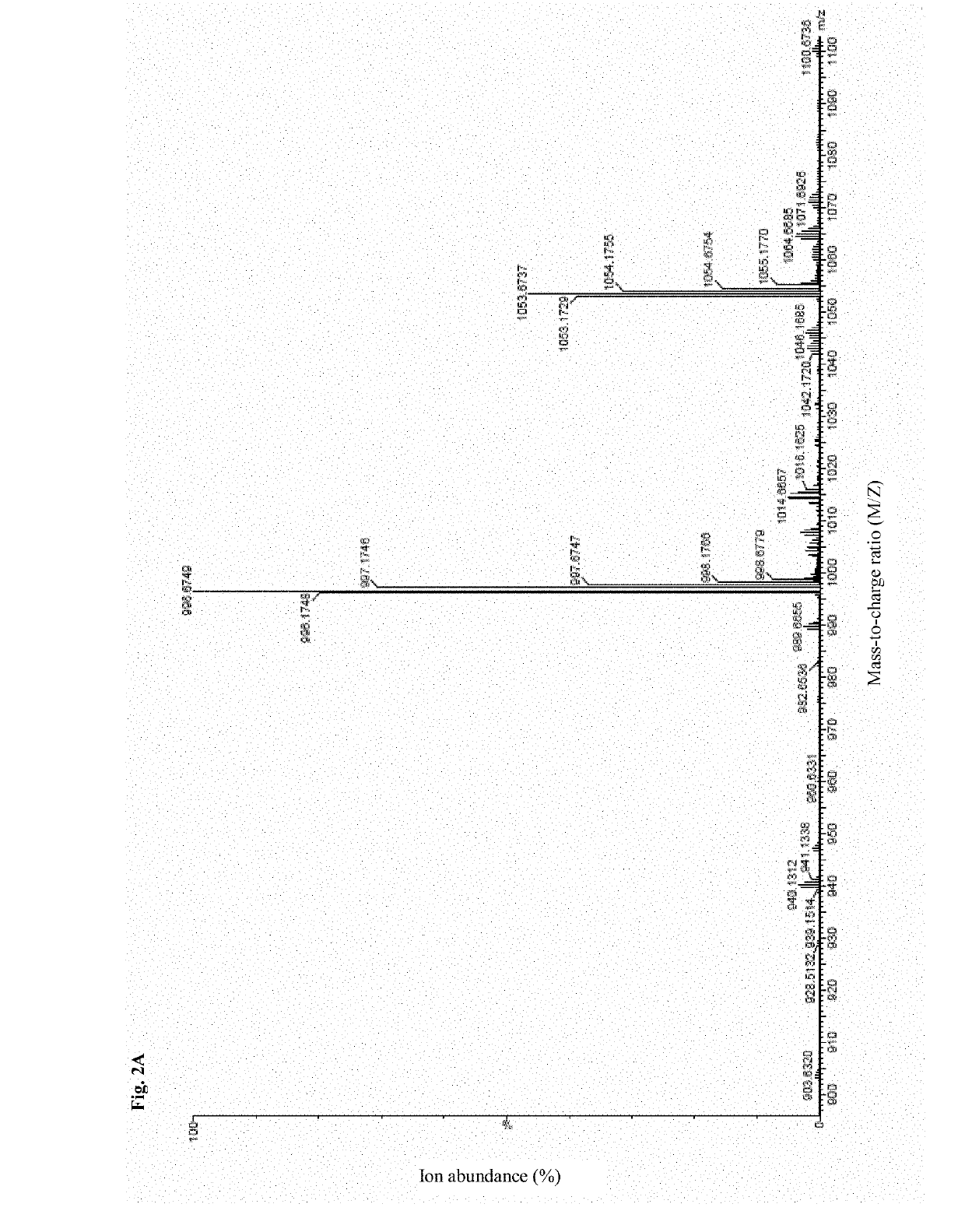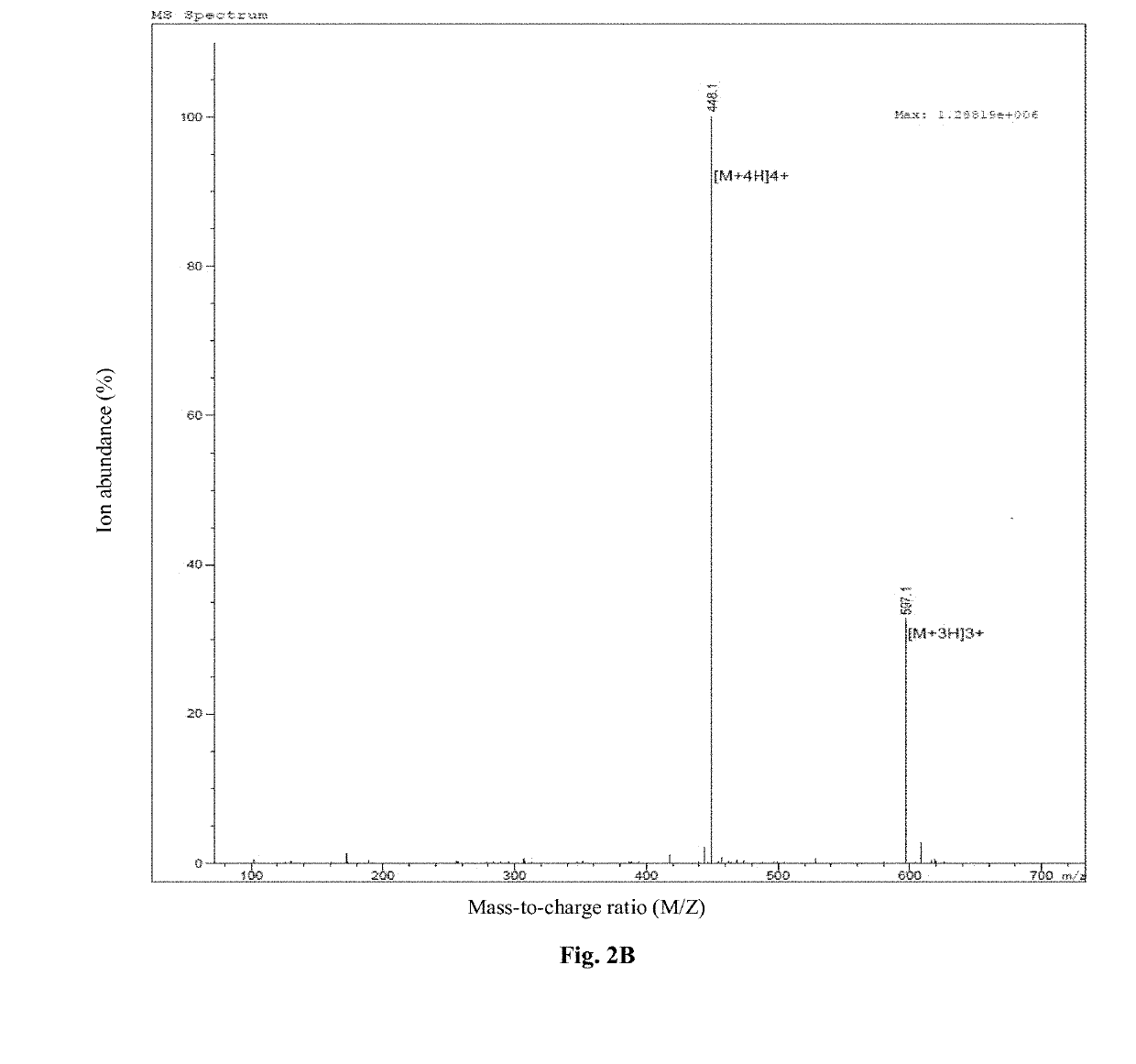Antimicrobial peptide derivative and use thereof
a technology of antimicrobial peptides and derivatives, applied in the field of biological medicine, can solve the problems of hemolysis of red blood cells, killing mice, and difficult development of drug resistance of antimicrobial peptides, and achieve the effects of improving monodispersity and zeta potential, maintaining stable, and simple and easy way
- Summary
- Abstract
- Description
- Claims
- Application Information
AI Technical Summary
Benefits of technology
Problems solved by technology
Method used
Image
Examples
example 1
Synthesis of Antimicrobial Peptide DP7 and Cholesterol Conjugate (DP7-C)
[0080]The antimicrobial peptide DP7 and the hydrophobic fragment conjugate were synthesized by the synthetic route as shown in FIG. 1, wherein the hydrophobic fragment comprises cholesterol, cholic acid, palmitic acid, stearic acid and lauric acid.
[0081]2-chlorotrityl chloride Resin; Fmoc-Rink Amide MBHA Resin, 4-(2′,4′-dimethoxyphenyl-fluorenylmethoxycarbonyl-aminomethyl)-phenoxyl-acetamido-methylbenzhydrylamine resin; Fmoc, fluorenylmethoxycarbonyl; pbf, tbu, Otbu, Trt and Boc are all protecting groups named 2,2,4,6,7-pentamethyldihydrobenzofuran-5-sulfonyl, tertiary butyl, tert-butoxy, triphenylmethyl, t-butyloxycarboryl respectively.
[0082]The specific synthesis method is as follows:
1 Swelling Activation and Deprotection of Resin:
[0083]Swelling: weigh 1.0 g of Rink MBHA (4-(2′,4′-dimethoxyphenyl-fluorenylmethoxycarbonyl-aminomethyl)-phenoxyl-acetamido-methylbenzhydrylamine resin) resin (substitution value: 0....
example 2
Critical Micelle Concentration of DP7-C
[0102]DP7-C can be self-assembled into micelles in aqueous solution. We detected the critical micelle concentration (CMC) of DP7-C by the pyrene fluorescence probe spectroscopy.
[0103]Pyrene is insoluble in water, and its solubility in water is about 6×107 mol / L, but it is easily soluble in ethanol and diethyl ether. The fluorescence emission spectrum of pyrene in aqueous solution has five fluorescence peaks, and the ratio of the first emission spectrum light intensity 11 to the third emission spectrum light intensity 13 in aqueous solution (the ratio of fluorescence intensity at 373 nm to that at 384 nm) is about 1.8. According to the literature, the surfactant may solubilize nonpolar organic compounds, and the surfactant at different concentrations may solubilize pyrene to varying degrees. Thus, the solubilizing ability of the solution will have an obvious mutation point after the concentration of surfactant exceeds the critical micelle concen...
example 3
Physical Characteristics of DP7-C Micelles
[0105]We detected some physical characteristics such as particle size and Zeta potential of DP7-C micelles by the atomic force microscope and Malvin particle size meter.
[0106]1 Atomic force microscope photography: prepare different concentrations of DP7-C solution, add to the mica sheets dropwise and dry naturally. Put the mica sheets coated with DP7-C on the atomic force microscope for photography.
[0107]2 Detection of particle size and Zeta potential: dissolve DP7-C in Milliq water, determine particle size and Zeta potential by Malvin particle size meter, and detect each sample for four times to obtain their average value.
[0108]3 Appearance and solution state of DP7-C: observe the appearance of MilliQ water, DP7-C water solution and lyophilized powder, and take photos with a camera; wherein, a is MilliQ water, b is DP7-C dissolved in aqueous solution, C is the state of DP7-C lyophilized powder after redissolving, and d is the shape and colo...
PUM
| Property | Measurement | Unit |
|---|---|---|
| concentration | aaaaa | aaaaa |
| concentration | aaaaa | aaaaa |
| concentration | aaaaa | aaaaa |
Abstract
Description
Claims
Application Information
 Login to View More
Login to View More - R&D
- Intellectual Property
- Life Sciences
- Materials
- Tech Scout
- Unparalleled Data Quality
- Higher Quality Content
- 60% Fewer Hallucinations
Browse by: Latest US Patents, China's latest patents, Technical Efficacy Thesaurus, Application Domain, Technology Topic, Popular Technical Reports.
© 2025 PatSnap. All rights reserved.Legal|Privacy policy|Modern Slavery Act Transparency Statement|Sitemap|About US| Contact US: help@patsnap.com



